#atari combat
Explore tagged Tumblr posts
Text
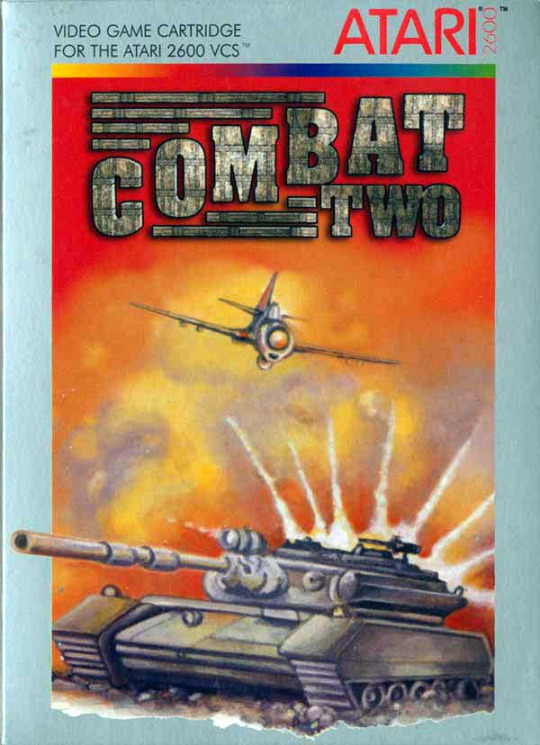

Combat Two (1983) for the Atari 2600, 2001 collector's edition
41 notes
·
View notes
Photo

Ready, Aim, Fire! 'Combat' Atari 2600 Catalog
15 notes
·
View notes
Text

A Hi Score patch for Atari Combat or Sears Tank Plus if you had the Tele-Games version.
46 notes
·
View notes
Text
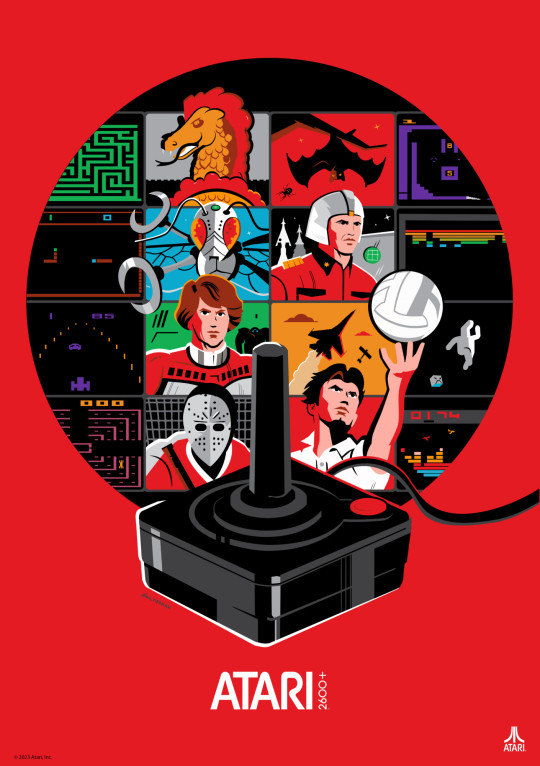
Atari 2600+ poster by Kevin Tiernan
#Atari#Atari 2600#Atari 2600+#Adventure#Berzerk#Breakout#Combat#Haunted House#Missile Command#Mr. Run and Jump#Night Driver#Slot Racers#Surround#Yars' Revenge#poster art#illustration#graphic design#video games#retro gaming#Kevin Tiernan
32 notes
·
View notes
Text
youtube
SPECIAL PRESENTATION: MTV & GameTrailers' Top 10 Best & Worst Video Games | 11/2006
An MTV/GT Collabo with a LOT of G4 alumni.
#The Pile#Special Presentation#MTV#GameTrailers#Bad Boys: Miami Takedown#Resident Evil 4#Barbie Horse Adventures: Wild Horse Rescue#Halo: Combat Evolved#Bubsy 3D#Metal Gear Solid#Zero Wing#Grand Theft Auto: San Andreas#Pac-Man#Final Fantasy VII#Zelda: The Wand of Gamelon#Tecmo Super Bowl#Shaq-Fu#Super Mario World#Super Mario 64#Custer's Revenge#Street Fighter II#E.T. (Atari 2600)#Tetris#Superman 64#The Legend of Zelda: Ocarina of Time#Amp'd Mobile#Xbox 360#Scion#Taco Bell#PlayStation 3
2 notes
·
View notes
Text
OMG I'm having flashbacks to Combat (Atari 1977)
https://images.app.goo.gl/VRu6Q7gYMLURxUXK9
2K notes
·
View notes
Text

Atari lore is that there were more copies of Pac-Man produced than Atari 2600 units to play them, and when including Pac-Man as a pack-in game alongside Combat wasn't depleting the stack fast enough -- and E.T. was also over-produced and underwhelming --- tons of these titles were dumped in a landfill in the Alamogordo, New Mexico desert with some other overstock. Pac-Man and E.T. were examples of games rushed to market which, no offense to Tod Frye or HSW, needed a bit more time and programming trickery to be what they were being promoted as and having good gameplay.
What I'm getting to here is that there's no unsealed copy of Atari 2600 Pac-Man (which wasn't excavated) that is worth $100.
275 notes
·
View notes
Text

VIDEO GAME PRONOUNS

2DS/2DS. 3DS/3DS. air/hockey. arc/arcade. arcade/arcade. atari/atari. beep/beep. beep/boop. boop/boop. bug/bug. button/button. by/byte. byte/byte. cab/cabinet. claw/crane. cli/click. code/code. coin/coin. con/controller. console/console. control/control. controller/controller. donkey/kong. DS/DS. frog/frogger. ga/game. gal/galaga. gam/game. game/cube. game/game. game/gameboy. game/gaming. ge/game. gli/glitch. glitch/glitch. head/set. headset/headset. ind/indie. indie/game. indie/indie. joy/joystick. joy/stick. joystick/joystick. mortal/combat. multi/player. n64/n64. NES/NES. on/online. P1/P2. pac/man. pac/pacman. PC/PC. pew/pew. pin/ball. pix/pixel. pixel/pixel. play/play. play/player. play/playing. play/station. player/one. player/player. player/two. pon/pointer. pong/pong. pre/press. PS/PS. qbert/qbert. qui/quick. single/player. SNES/SNES. space/invader. street/fighter. tet/tetris. theplayer/theplayer. token/token. vi/vid. vid/deo. vid/video. video/game. video/video. VR/VR. wii/wii. wiiu/wiiu. xbox/xbox. 🎮. 🕹️. 👾. ⚔️. 💥. 🔫. 🤖.

#I cant find any names so#right now its not a full#id pack#pupsmail︰pronouns#pronoun pack#pronoun suggestions#pronoun ideas#neopronouns#emojiself#nounself
45 notes
·
View notes
Text

The 1989 NES version of Shadowgate is one of my favorite videogames of that era. It’s a point-and-click dungeon crawl, and is perfect in a lot of ways. For the most part, it lacks the skewed logic of many point-and-click games, though its approach to magic can be tricksy in a way I appreciate. The monsters are interesting, but there is no real combat, it’s all just puzzles in a different form, and they must all be solved if you have any chance of defeating the Warlock Lord and stopping the raising of Behemoth. And boy does the game oozes atmosphere. Thanks to the timer of your torches burning out and the genuinely unsettling soundtrack, the game feels like it has real stakes, real danger.
I knew the NES version was a port/rework of an earlier computer game developed initially for Mac, but it wasn’t until last summer I saw the cover for it. I don’t know why I assumed it would have the same somewhat silly looking gargoyle as the NES release. It didn’t. This cover is so much coooooler. Having fiddled with emulations of the original, I do think the NES version is better — though slightly higher res, the Mac version is black and white and lacks the soundtrack, which is a key component of the game’s success.
Couple funny things. Until I bought the computer version (this one is actually for Atari computers), I didn’t realized that Déjà Vu and Uninvited preceded Shadowgate (the NES ports started with Shadowgate, then Uninvited, then finally Déjà Vu). And I only just learned as I prepared to write this that when SSI closed up in 1994, it was acquired by Mindscape, which had published Shadowgate. There’s no meaningful connection between Shadowgate and the Gold Box games beyond that purchase, but it tingled the back of my brain in a funny way.
78 notes
·
View notes
Text
So I always assumed the 1987 Atari game "Desert Falcon" was some sort of Jet Fighter combat sim game.
I finally played the Atari 7800 version on my Evercade Super Pocket...
... And you play as a Falcon. In the Desert.
lol.
74 notes
·
View notes
Text

Atari Combat: Tanks Versus Zombies.
Score points by shooting your opponent, or by getting rid of Zombies.
3 notes
·
View notes
Text
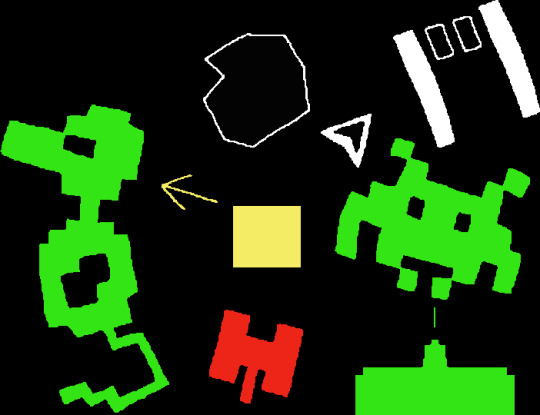
Adventurer Invades the Battlefield! by Screaming-Sheldon
#Atari#Atari 2600#Adventure#Asteroids#Combat#Pong#Space Invaders#illustration#video games#retro gaming#Screaming-Sheldon
3 notes
·
View notes
Text

Harukaze Mound wind "twinsies"
I'm interested in what direction this series will go. They set up that promise of going to the same high school, then reinforced it, but the end seems like it's going to go in a different direction...

Ichi the Witch wins "most deserved beat down"
I was kinda hoping that it'd turn out she had no more sorrow to give, but this is still good. Eat shit and die.
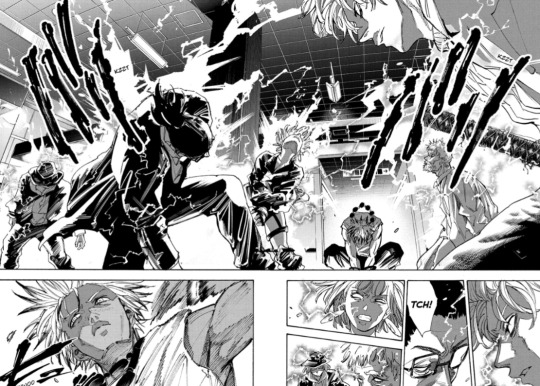
Sakamoto Days wins "Ex Machina"
So Atari appears to save Shin, but that summons the Order, so Shin makes the order fight X, but then Gozu undoes that, so now Shin has to fight X, but then Sakamoto appears...
I miss Fat Sakamoto.

Shinobi Undercover wins "best supporting character"
Suzume was in excellent form this chapter. She keeps her annoying flirt energy, while still showing off her talents and gassing up her squadmates.

Ultimate Exorcist Kiyoshi wins "best combat gag"
We've been aura-farming for so long, some people wondered if this series had forgotten its comedic beginnings. This chapter seems to be a sign that Usui is figuring out how to synthesize some funny moments with hype combat.
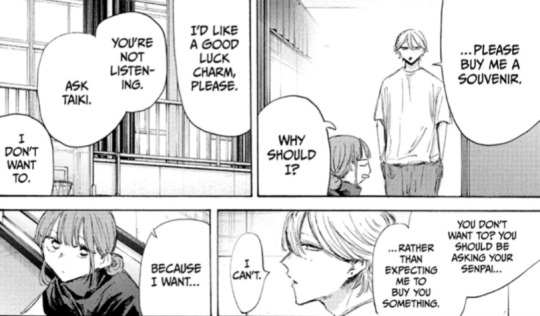
Blue Box wins "stupid idiot"
This man understands nothing ever. He's hilarious.

Hima-Ten wins "rom-com behavior"
I will say it a million times more - polyamory could solve this.
Witch Watch had a second chapter in a row that I could not read due to second-hand embarrassment. This series truly is the Saturday Morning Cartoon of Jump.

RoboCo wins the RoboCo award for being RoboCo.
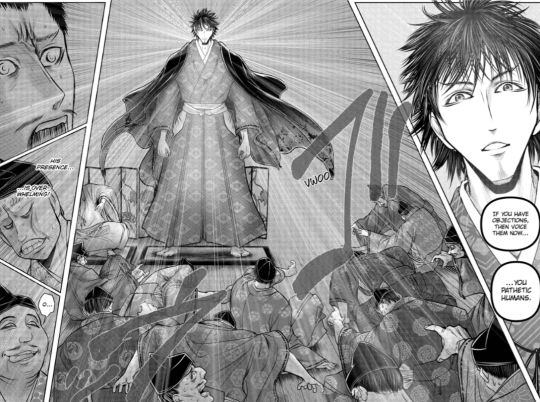
The Elusive Samurai wins "aura farming"
Aura-farming is a funny enough term, but when the main villain literally begins to farm divine power from across the world to influence people, it gets even funnier.

Akane Banashi wins the Shonendere Award for Best Rivals.
The 'jilted lovers' energy of this scene is great. The way they hide Hikaru and Karashi's eyes, the difference between these two's reactions (Karashi trying to pretend he doesn't care, while Hikaru screams)... It's so good.
#harukaze mound#ichi the witch#sakamoto days#shinobi undercover#ultimate exorcist kiyoshi#blue box#hima-ten#me and roboco#the elusive samurai#Akane-Banashi
15 notes
·
View notes
Note
Were SAO and Ender's Game just a coincidence, or are you deliberately seeking out stories about "gamers"? If it's the latter, would you consider Iain Bank's "The Player Of Games" to fit the brief?
It was a coincidence, actually. I reread Ender's Game recently to prepare to read Speaker for the Dead, its sequel, which I had never read before. Meanwhile, most of the anime I'm watching is part of a groupwatch group of webfic authors. One of the members of the group, Gazemaize, has never seen much anime before, and wanted to watch anime that were particularly influential. We started out by watching all of Evangelion, and then decided that Sword Art Online would also, in a tragic way, qualify as massively influential...
I haven't read The Player of the Games, so I can't comment on that.
I did cut an extended section from my SAO essay on the history of video games in media. This section is fragmentary, but here it is if you're interested:
When Nintendo revived the video game industry in America in 1985, it did so fighting an entrenched social stigma against the term "video game." Two years prior, Atari crashed the market by flooding it with barely-functional shovelware; on top of lingering consumer mistrust, many considered video games to be a fad past its expiration date.
Nintendo tackled this stigma primarily through deception. The Nintendo Entertainment System was marketed not as a "video game," but as a multipurpose electronic toy. As part of the trick, the company drew on its nearly century-long history as a (non-video) game and toy manufacturer, bundling the console with toy-like peripherals like R.O.B. and the Super Scope.
It worked. The NES was a massive hit. But its success came at a price, at least regarding the cultural conception of video games. During the arcade era, video games had primarily been a teen activity, with arcades not just a location to play but a place to hang out. Now, though, the overwhelming image of video games was as a toy for children.
This image was reflected in media about video games. The pre-crash Tron (1982), despite being a Disney movie, was rated PG (before PG-13 existed) and starred an adult Jeff Bridges in a plot revolving around corporate espionage. Not a single child character appeared in the film. But the post-Nintendo The Wizard (1989) starred a 12-year-old Fred Savage and a 9-year-old Luke Edwards. Nintendo would also license multiple Saturday morning children's cartoons, such as The Super Mario Bros. Super Show (1989) and Captain N: The Game Master (1989). Nintendo's kid-friendly mascot characters became the cultural face of video games, recognized by billions worldwide.
Slowly, though, the demographic reality of gaming and Gamers changed. By the mid-90s, hardware had advanced enough for sprawling, narrative-dense RPGs like Final Fantasy VII (1997) to replace the cute, mascot-driven platformers of the preceding generations. By the early 2000s, graphics were capable of depicting gritty, realistic warzones, and first-person shooters became explosively popular thanks to titles like Halo: Combat Evolved (2001) and Call of Duty: Modern Warfare (2007). Teens once more became the core demographic, and adults who grew up with games were sticking around too.
But video games were still not taken seriously by the public at large. Either the kid-friendly image persisted, as through Spy Kids 3-D: Game Over (2003), or video games got sent to the horror movie ghetto via a startlingly long series of cheap, critically-panned films: Resident Evil (2002), House of the Dead (2003), Doom (2005), Alone in the Dark (2005), BloodRayne (2005), Silent Hill (2006), Stay Alive (2006), and the equally-startling number of sequels those films collectively spawned. Most of these adaptations were only marginally faithful to the source material, as if even slasher horror was too good a genre to consider video games a worthy mode of storytelling.
10 notes
·
View notes
Note
Dear Vector Prime, A long time ago your incarnation from Axiom Nexus told us about how a team of scientists worked to create the Trainbots, and each of them named a different member of the team. Since then we've learned about two other Trainbots, Yamabuki and Ginou - who named them?
Dear Densha Denominator,
They named themselves, as it happens—though not without some outside influence.
As with the majority of the prototype "G Liner" Trainbots, Yamabuki was not given a formal name upon her creation, instead going by her development codename "Yellow" or her nickname "Doctor". It was under this name that she met fellow medic Atari Hitotonari of the Earth Defense Command, who helped Yellow to work through her complicated feelings about her position as the Trainbots' doctor, and the two subsequently became close friends. One evening, Atari remarked that Yellow's paintwork reminded her of her favorite flower, the Japanese kerria; during her time as a member of the EDC's Kiss Players, Atari would look at those flowers to take her mind off of the stress of her experiences, and she now found that looking at Yellow gave her the same feeling of comfort. Touched by Atari's kind words, Yellow decided to rename herself "Yamabuki" after the flower, as a tribute to her friend.
Ginou, meanwhile, was originally known as "Silver" for the layer of silvanite—a unique, reactive metal—that covered his superstructure. After discovering his ability to manipulate silvanite to create protective barriers, Silver travelled to the New Energy Resource Research and Development Laboratory where the substance had been discovered, wanting to learn more and master his strange powers. Doctor Ōgaki, head of the laboratory, took Silver under his wing; he had more experience with silvanite than most, as his friend, the late Ginnosuke Minakaze, had discovered the mineral while the two were working together. With Ōgaki's guidance, Silver became a proficient combat nurse and defensive warrior, and took the name "Ginou" to honor his mentor's old friend.
#ask vector prime#transformers#maccadam#japanese generation 1#trainbots#yamabuki#atari hitotonari#earth defense command#kiss players#ginou#doctor ogaki#doctor minakaze
9 notes
·
View notes
